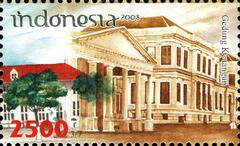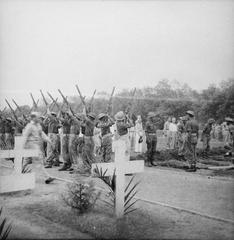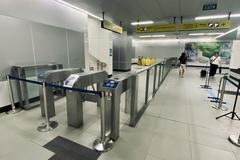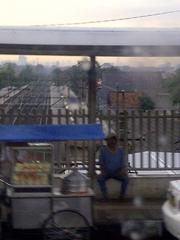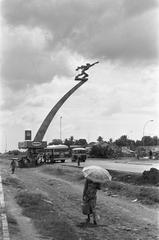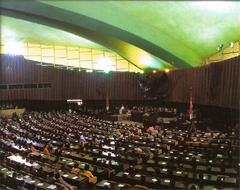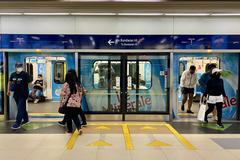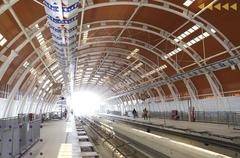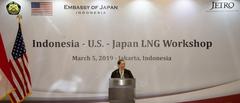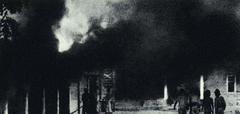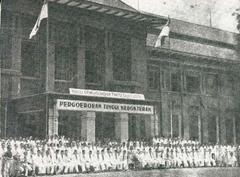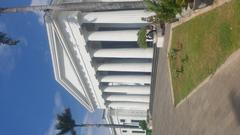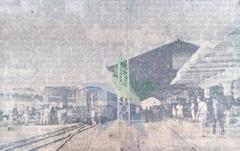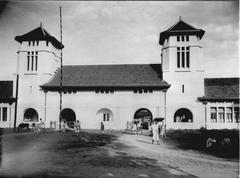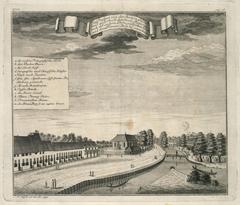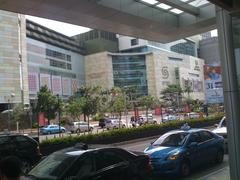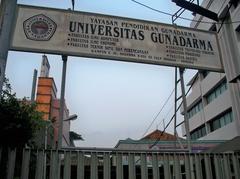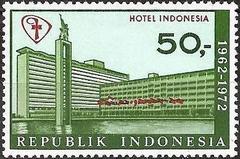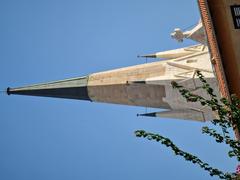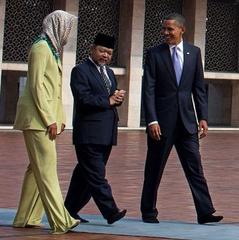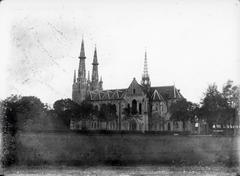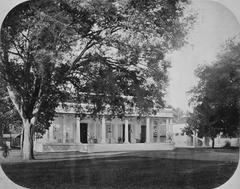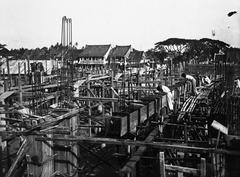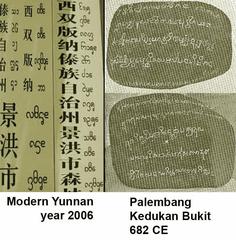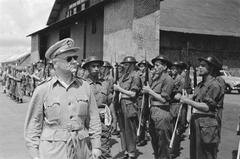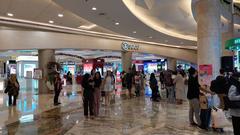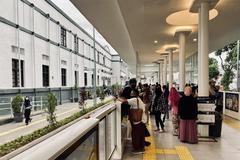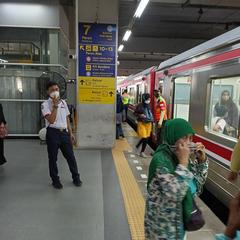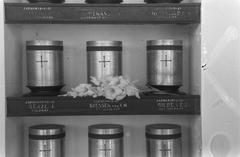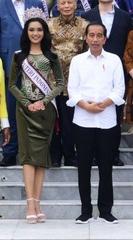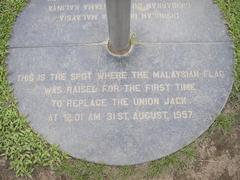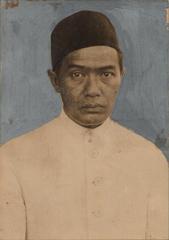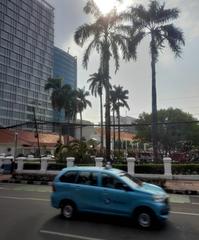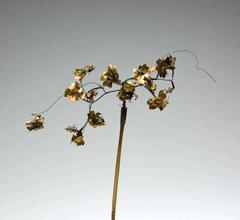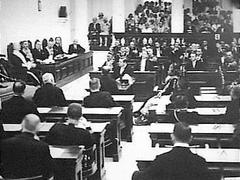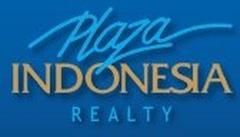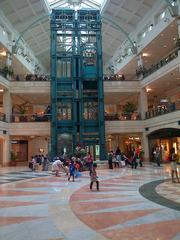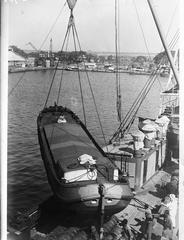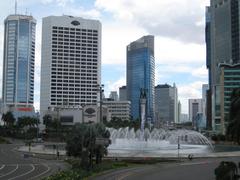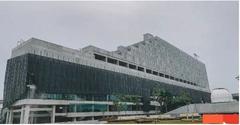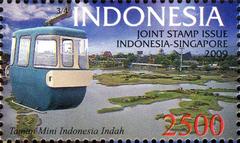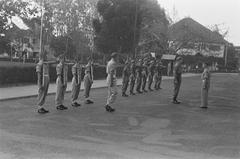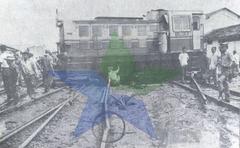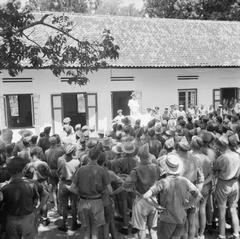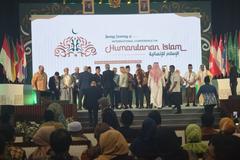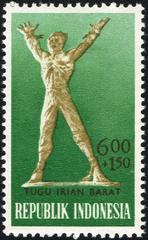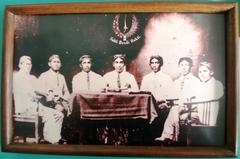Textile Museum Jakarta: Visiting Hours, Tickets, and Historical Sites Guide
Date: 14/06/2025
Introduction
The Textile Museum Jakarta (Museum Tekstil Jakarta) is a cornerstone of Indonesia’s cultural landscape, dedicated to preserving and showcasing the nation’s rich and diverse textile heritage. Housed in a striking Dutch colonial-era building in Central Jakarta, the museum offers a deep dive into Indonesia’s traditional crafts—ranging from batik and ikat to songket and ulos. With over 2,000 artifacts, immersive workshops, and engaging exhibitions, the Textile Museum provides an educational and memorable experience for all visitors, whether you’re a cultural enthusiast, history buff, or curious traveler (Museum Tekstil Jakarta; Wikipedia).
Table of Contents
- Introduction
- Early Origins and Architectural Heritage
- Role During Indonesia’s Independence Struggle
- Establishment as the Textile Museum
- Growth of Collections and Institutional Mission
- Batik Gallery and UNESCO Recognition
- Educational and Conservation Initiatives
- Visitor Information
- Community Engagement and Contemporary Relevance
- Visual and Virtual Experiences
- Ongoing Challenges and Future Directions
- Frequently Asked Questions (FAQ)
- Conclusion
- References
Early Origins and Architectural Heritage
The Textile Museum is housed in a Dutch colonial-era mansion dating to the early 19th century, originally a private residence for a French national. Over time, it passed through several hands, including the Turkish consul in Batavia and later Karel Cristian Cruq, reflecting Jakarta’s cosmopolitan past. The building’s high ceilings, wide verandas, and thick masonry are characteristic of colonial architecture, adapted for Jakarta’s tropical climate (Wikipedia).
Role During Indonesia’s Independence Struggle
During Indonesia’s fight for independence, the building served as the headquarters of the Barisan Keamanan Rakyat (Front of People’s Safety). After independence, it became an elderly care institution before its eventual transition to a museum under the city government (Wikipedia).
Establishment as the Textile Museum
The decline of traditional textiles in the 1970s spurred the founding of the Himpunan Wastraprema (Society of Textile Lovers), whose private donations formed the museum’s initial collection. The museum officially opened on June 28, 1976, inaugurated by First Lady Madame Tien Soeharto, with the goal of preserving Indonesia’s textile heritage for future generations (Museum Tekstil Jakarta; Google Arts & Culture).
Growth of Collections and Institutional Mission
Today, the museum holds over 2,000 textiles and artifacts, including batik, woven fabrics, mixed-media pieces, textile tools, and modern garments. The collections represent regions across Indonesia—Java, Sumatra, Bali, Kalimantan, Sulawesi—and are complemented by detailed explanations of motifs, techniques, and their cultural significance (Harga Tiket; The Crazy Tourist).
Batik Gallery and UNESCO Recognition
A key highlight is the Batik Gallery, established in 2010 to commemorate UNESCO’s designation of Indonesian batik as an Intangible Cultural Heritage of Humanity. The gallery features antique and modern batik, regional variations, and interactive educational displays. Visitors can witness the evolving artistry of batik and even participate in hands-on workshops (Google Arts & Culture).
Educational and Conservation Initiatives
The Textile Museum is more than an exhibition space—it is a center for research, conservation, and public education. Regular seminars, batik-making and natural dye workshops, weaving demonstrations, and a dedicated conservation lab all support the museum’s mission. The Natural Dye Garden, spanning 2,000 square meters, showcases plants essential to traditional textile processes (Jakarta Travel Guide; Little Steps Asia).
Visitor Information
Opening Hours
- Tuesday to Sunday: 09:00 – 16:00 (some exhibitions may close at 17:00)
- Closed: Mondays and major public holidays
Ticket Prices
- Adults: IDR 5,000–30,000
- Students/Seniors: IDR 15,000 (discounts may vary)
- Children under 12: Free or discounted
- For the most up-to-date pricing, check the official museum website.
Accessibility
- Wheelchair ramps and accessible restrooms are available.
- Some older sections may have limited accessibility—contact the museum in advance if you have specific needs.
Guided Tours
- Guided tours in English and Bahasa Indonesia are available daily at designated times (usually 10:00 and 14:00).
- Advance booking is recommended, especially for groups.
Directions
- Location: Jalan Aipda KS Tubun No. 2-4, West Jakarta, near Tanah Abang Market.
- Public Transport: TransJakarta bus, commuter train (KRL), taxi, or ride-hailing apps.
- Parking: On-site parking is available but limited during busy periods.
Best Time to Visit
- Weekday mornings offer the most peaceful experience.
- Avoid weekends and public holidays to beat the crowds.
Nearby Attractions
- National Museum of Indonesia (Museum Nasional)
- Monas (National Monument)
- Jakarta Cathedral
- Tanah Abang Textile Market
Community Engagement and Contemporary Relevance
The museum’s Pendopo Kreativitas (Creativity Pavilion) hosts workshops, lectures, and cultural events, fostering community involvement and keeping traditional crafts alive. Collaborations with organizations like Wastraprema ensure ongoing relevance and innovation (Jakarta Daily).
Visual and Virtual Experiences
Explore the museum virtually through Google Arts & Culture or the museum’s own online resources, which feature high-resolution images, interactive maps, and digital exhibitions.


Alt tags added for SEO optimization.
Ongoing Challenges and Future Directions
The Textile Museum faces challenges common to heritage sites: securing funding, managing conservation needs, and navigating pressures from urban development. Nevertheless, its commitment to innovation—such as adopting digital resources and engaging new audiences—ensures its continued role as a vital cultural institution.
Frequently Asked Questions (FAQ)
Q: What are the Textile Museum Jakarta’s opening hours?
A: Tuesday to Sunday, 09:00–16:00; closed Mondays and public holidays.
Q: How much are tickets?
A: Adult tickets range from IDR 5,000–30,000; discounts for students, seniors, and children.
Q: Is the museum wheelchair accessible?
A: Yes, with some limitations in older areas—contact the museum for details.
Q: Are guided tours available?
A: Yes, in English and Indonesian; book in advance for groups.
Q: Can I take photos inside?
A: Non-flash photography is generally permitted; follow signage for restrictions.
Q: Are there workshops?
A: Yes, regular batik-making, weaving, and dye workshops are offered—check schedules on the official website.
Conclusion
The Textile Museum Jakarta is an essential destination for anyone interested in Indonesia’s vibrant textile traditions and cultural history. Its rich collections, interactive workshops, and accessible facilities make it both an educational hub and an enjoyable outing. Whether you’re exploring exquisite batik, learning weaving techniques, or simply soaking in the colonial architecture, the museum offers a compelling look into Indonesia’s artistic legacy.
For up-to-date information on exhibitions, workshops, and visiting details, consult the official website and follow the museum’s social media channels. Enhance your cultural journey by downloading the Audiala app for curated guides and exclusive content.
References
- Museum Tekstil Jakarta – Our History
- Textile Museum (Jakarta) – Wikipedia
- A Virtual Tour to the Museum Tekstil – Google Arts & Culture
- Visiting the Textile Museum in Jakarta – Jakarta Travel Guide
- 25 Best Things To Do In Jakarta – The Crazy Tourist
- Museum Tekstil Jakarta: Visiting Hours, Tickets, and Cultural Highlights
- Museum Tekstil Holidify Visitor Reviews
- Jakarta Daily – Textile Museum Feature
- Little Steps Asia – Child-Friendly Museums
- Harga Tiket – Museum Tekstil
